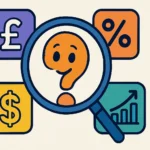Let’s start with a definition: A budgeting app is a type of personal finance management software, typically for smartphones or web browsers, designed to help you track income, categorize expenses, set financial goals, and ultimately gain control over your money flow. Is your paycheck seemingly vanishing into thin air? Do you feel like you should be saving more, but aren’t sure where the money goes? You’re not alone, and technology offers a powerful solution. Choosing the best app for budgeting, however, can feel overwhelming with so many options available. This guide will cut through the confusion. We’ll explore essential features, break down popular apps by category, and provide a clear roadmap to help you select the perfect digital partner to manage your money effectively in 2025.
Table of Contents
What Exactly is a Budgeting App & Why Use One?
Think of a budgeting app as a smart financial assistant living in your pocket or on your computer. It goes beyond simple spreadsheets by automating many tedious tasks involved in money management.
Definition: More Than Just Tracking
While expense tracking is fundamental, modern budgeting apps offer much more. They integrate with your bank accounts, analyze spending patterns, help you plan for future goals (like saving for a house or paying off debt), alert you to upcoming bills, and provide insightful reports on your overall financial health. They aim to make managing money less reactive and more proactive.
Key Benefits of Using a Budgeting App
Why ditch the spreadsheet or mental math? Budgeting apps offer compelling advantages:
- Financial Clarity & Awareness: See exactly where your money goes, often categorized automatically. This awareness is the first step to change. (As highlighted by Equifax).
- Convenience & Automation: Linking bank accounts means transactions are often imported and categorized automatically, saving significant time and effort compared to manual methods.
- Goal Achievement: Easily set and track progress towards savings goals (emergency fund, vacation, down payment) or debt reduction plans. Visual progress bars keep you motivated.
- Improved Spending Habits: Real-time feedback, spending alerts, and category limits help curb impulse buys and encourage mindful spending. (PocketGuard emphasizes this).
- Reduced Financial Stress: Having a clear picture of your finances and a plan in place significantly reduces anxiety about money.
- Accessibility: Manage your money anytime, anywhere, from your phone or computer.
Must-Have Features: What Separates the Good from the Great?
With countless apps vying for your attention, focus on these core features when comparing options (informed by insights from SmartPurse, Apocha, NerdWallet, and others):
Bank Account Syncing & Auto-Import
The ability to securely connect to your checking, savings, and credit card accounts to automatically import transactions is a huge time-saver and ensures accuracy. Check if the app supports your specific financial institutions.
Smart Expense Categorization (Automatic & Custom)
Good apps automatically categorize most transactions (groceries, gas, rent). Great apps also allow you to easily correct miscategorizations and create custom categories tailored to your specific spending habits or tracking needs.
Budget Creation & Management Tools
Look for flexibility. Does the app support different budgeting methods (like traditional category budgeting, zero-based, envelope style)? Can you easily set spending limits for categories and track progress against them?
Goal Setting & Tracking
Whether saving for a down payment, building an emergency fund, or paying off debt, the app should allow you to set specific, measurable goals and visualize your progress (e.g., with progress bars or projected completion dates).
Reporting & Insights
Go beyond basic tracking. The best apps offer reports and visualizations (charts, graphs) showing spending trends over time, net worth calculation, cash flow analysis, and potentially AI-powered insights into saving opportunities.
Bill Tracking & Reminders
Features that track upcoming bill due dates and send reminders can help you avoid costly late fees and protect your credit score. Some apps even facilitate bill payments.
Intuitive User Interface (UI/UX)
An app can have all the features in the world, but if it’s clunky and confusing, you won’t use it. Look for a clean design, easy navigation, and a customizable dashboard that presents key information clearly.
Security Features
This is paramount when dealing with financial data. Look for:
- Bank-Grade Encryption: Protects your data both in transit and at rest.
- Multi-Factor Authentication (MFA): Adds an extra layer of security to your login.
- Read-Only Access: Most apps only require read-only access to your bank data, meaning they can’t initiate transactions.
- Clear Privacy Policy: Understand how the app uses and protects your data.
Decoding the “Best”: Matching Apps to Your Needs (Categories & Examples)
The best app for budgeting isn’t one-size-fits-all. It depends entirely on your personality, goals, budget, and technical comfort level. Here’s a breakdown by common user needs, with examples of popular apps often mentioned in reviews (like those from NerdWallet, CNET, Forbes, PCMag, DianApps) as of early 2025. Note: Features and pricing change; always verify on the app’s official website.

Best for Beginners & Simplicity
- Focus: Easy setup, clear overview of spending, simple tracking, minimal overwhelm.
- Example Apps Often Mentioned:
- Rocket Money: Often praised for its user-friendly interface, automatic categorization, spending insights, and bill negotiation/subscription cancellation features (premium). Its free version offers basic budgeting, but many core features require a subscription.
- PocketGuard: Focuses on the “In My Pocket” feature, calculating how much money is safe to spend after bills and savings goals are accounted for. Aims to prevent overspending with a simplified view. Offers free and paid (Plus) versions.
- NerdWallet App: A strong free budget app option that combines budgeting with credit score tracking, net worth monitoring, and educational content. Less focused on granular budgeting methods like zero-based.
Best for Hands-On Budgeters (Zero-Based/Envelope Methods)
- Focus: Proactive budgeting, giving every dollar a job, detailed planning, strong methodology.
- Example Apps Often Mentioned:
- YNAB (You Need A Budget): More than just an app, it’s a specific budgeting philosophy (assign every dollar a job). Known for its effectiveness in changing spending habits and getting users intensely involved in their finances. It has a steep learning curve for some and is subscription-based ($14.99/month or $109/year as per recent CNET data) after a 34-day free trial. Often cited as life-changing by its devotees.
- Goodbudget: Based on the traditional envelope budgeting system, where you allocate money into digital “envelopes” for different categories. Great for visual planners. Offers a functional free budget app tier with limitations (envelopes, accounts, devices) and a paid ‘Plus’ version for more features ($10/month or $80/year per recent CNET data).
- EveryDollar: Developed by Dave Ramsey’s team, focuses on zero-based budgeting. The free version requires manual transaction entry, while the paid premium version syncs with banks.
Best Free Budget App Options (Or Strong Free Tiers)
- Focus: Providing core budgeting functionality without a subscription fee.
- Example Apps Often Mentioned:
- NerdWallet App: As mentioned, offers robust free features including tracking, budgeting, and credit score monitoring.
- Empower Personal Dashboard™: (Formerly Personal Capital) Excellent free tools primarily focused on tracking net worth, investments, and spending analysis rather than strict budgeting rules. Great for getting a high-level overview of your entire financial picture. Paid advisory services are separate.
- Goodbudget (Free Tier): Usable for basic envelope budgeting if the limitations work for you.
- Note: Most apps offer free trials, but truly free, full-featured apps are less common. Assess if the free tier meets your core needs.
Best for Tracking Wealth & Investments
- Focus: Consolidating investment accounts, tracking net worth, analyzing asset allocation alongside spending.
- Example Apps Often Mentioned:
- Empower Personal Dashboard™: Its strength lies in aggregating investment accounts (401k, IRA, brokerage) alongside bank accounts to provide a complete net worth picture and investment analysis tools (fee analyzer, allocation checkup). Free tracking tools are top-notch.
- Monarch Money: Often positioned as a strong Mint alternative, praised for robust account linking, investment tracking, customizable dashboard, collaboration features, and goal planning. It is a premium app ($99.99/year per recent PCMag/ZDNET data) after a free trial.
- Quicken Simplifi: Offers a good balance of budgeting, spending analysis, and investment tracking features with custom reporting and cash flow projection. Subscription-based ($6/month, sometimes with promos, per recent CNET data).
Best for Couples or Shared Finances
- Focus: Features allowing partners to share budgets, track joint accounts, and manage household finances together.
- Example Apps Often Mentioned:
- YNAB (YNAB Together): Allows sharing the subscription and budget with up to five other people.
- Monarch Money: Supports collaboration features and joint finance tracking.
- Goodbudget: The Plus version allows sharing across multiple devices.
- Honeydue: Specifically designed for couples (though less frequently mentioned in the latest top-tier reviews, worth checking if couple-specific features are primary).
- Important Disclaimer: This is not an exhaustive list, and the app landscape changes rapidly. App features, pricing, and user reviews can evolve. Always do your own research and utilize free trials before committing.
How to Choose the Right Budgeting App for YOU: A Step-by-Step Guide
Instead of searching endlessly for the single best app for budgeting, focus on finding the best app for your specific situation. Follow these steps:

- Step 1: Define Your Budgeting Style & Goals:
- Are you a meticulous planner (zero-based)? Do you prefer visual limits (envelope)? Or just want a simple overview?
- What’s your main goal? Tracking spending? Saving for a specific target? Getting out of debt? Tracking investments? Be clear on what you need the app to excel at.
- Step 2: Consider Your Budget (Free vs. Paid):
- Many powerful apps require a subscription. Decide if the features warrant the cost. Start with free budget app options or free trials to see if they suffice. Remember, a paid app you use consistently is better than a free one you ignore.
- Step 3: Evaluate Key Features:
- Refer back to the “Must-Have Features” list. Which are non-negotiable for you? Does the app connect to all your banks? Does it offer the reporting you need?
- Step 4: Prioritize Security & Privacy:
- How does the app protect your data? Read user reviews specifically mentioning security. Check their website for details on encryption and MFA. Be comfortable with their privacy policy. (See more on this below).
- Step 5: Test Drive with Free Trials:
- This is crucial! Most paid apps offer free trials (from 7 to 34 days or more). Use this time to connect your accounts (if comfortable), set up a budget, categorize transactions, and explore the features. Is it intuitive to you?
- Step 6: Assess Ease of Use & Support:
- Does the app feel easy and pleasant to use daily? Is help readily available (tutorials, FAQs, customer support) if you get stuck? Check recent app store reviews for insights on usability and support quality.
Security & Privacy Concerns: What You MUST Know Before Linking Accounts
Convenience comes with considerations. Linking bank accounts to third-party apps involves trust and potential risks highlighted in search results.
Understanding the Risks
- Data Breaches: While reputable apps use strong security, no system is 100% impenetrable. A breach at the app provider could potentially expose your data.
- Violating Bank Terms of Service (ToS): Some bank agreements technically prohibit sharing your login credentials with third parties. While many apps now use more secure connection methods (like OAuth or APIs like Plaid) that don’t always require storing your password, directly inputting your bank login/password into some apps could potentially void your bank’s fraud protection if your credentials are compromised through that app. Read your bank’s ToS and understand how the app connects.
- Data Aggregators: Many apps use third-party services (like Plaid or Finicity) to connect to banks. Understand their security practices too.
What to Look For (Security Best Practices)
- Reputable Company: Choose apps from established companies with a strong track record.
- Strong Encryption: Look for mentions of bank-level or AES-256 bit encryption.
- Multi-Factor Authentication (MFA): Enable this on your app account for added protection.
- Read-Only Access: Ensure the app only needs permission to view your data, not move money.
- Clear Privacy Policy: Understand what data is collected and how it’s used or shared.
- Regular Security Audits: Some companies publicize their security audits.
Safer Alternatives?
If linking accounts makes you uneasy:
- Look for apps that support manual transaction entry (like the free EveryDollar or Goodbudget).
- Consider using a detailed spreadsheet.
- Utilize your bank’s own budgeting tools if they are robust enough.
The Consumer Financial Protection Bureau (CFPB) and Federal Trade Commission (FTC) offer resources on protecting your financial data online.
Beyond Apps: Are Spreadsheets or Pen & Paper Still Viable?
Absolutely! While apps offer automation and convenience, manual methods have their place.
Pros & Cons of Manual Methods
- Pros: Ultimate control and customization (spreadsheets), enhanced awareness from manual entry, zero cost (usually), no third-party data sharing/security concerns.
- Cons: Time-consuming, requires discipline, prone to errors, harder to get real-time updates or generate complex reports easily.
When They Might Be Better
- If you have significant privacy concerns about linking accounts.
- If you prefer a very hands-on, tangible approach (pen/paper).
- If you have complex, unique needs that apps don’t cater to and possess strong spreadsheet skills.
- If you find app features overwhelming.
Conclusion: Finding Your Perfect Budgeting Partner
There isn’t one single best app for budgeting that universally triumphs over all others. The “best” app is the one that aligns with your financial goals, your budgeting style, your budget for the tool itself, and crucially, the one you will use consistently.
Instead of getting stuck in analysis paralysis, define what you need, explore options in relevant categories, prioritize security, and leverage free trials. Whether you choose a feature-packed premium app like YNAB or Monarch Money, a solid free option like Empower or NerdWallet, or even a trusty spreadsheet, the act of intentionally planning and tracking your finances is what truly matters. The right tool simply makes that process easier and more effective. Take the first step today – your future self will thank you.
Frequently Asked Questions (FAQ)
What’s the absolute #1 best app for budgeting in 2025?
Honestly, there isn’t a single “best” app for everyone. It’s highly subjective! The best choice depends on your individual needs: Are you a beginner needing simplicity (maybe Rocket Money, PocketGuard)? A detailed planner (YNAB, Goodbudget)? Focused on investments (Empower, Monarch)? Or need a solid free option (NerdWallet, Empower)? The key is to evaluate features against your goals and preferences using free trials.
Are free budgeting apps really good enough?
Yes, many free budget apps (or apps with strong free tiers like Empower or NerdWallet) offer excellent core functionality like expense tracking, basic budget categorization, and net worth monitoring. They are often perfectly adequate, especially for beginners. Paid apps typically offer more advanced features, deeper customization, dedicated support, more robust reporting, or specific methodologies (like YNAB).
Is it safe to connect my bank account to a budgeting app?
Reputable apps use bank-level security (like encryption and MFA) to protect your data, and many use secure third-party connectors (like Plaid) that often don’t store your bank password directly. However, risks always exist (data breaches, potentially violating bank ToS depending on the connection method). Prioritize apps from well-known companies, enable MFA, read privacy policies, and consider manual entry if you’re highly concerned.
Can budgeting apps actually help me get out of debt?
Yes, definitely! Budgeting apps help by: 1) Showing you exactly where your money is going, revealing areas to cut back and free up cash for debt payments. 2) Allowing you to set specific debt payoff goals and track progress, keeping you motivated. 3) Some apps (like PocketGuard, YNAB) have specific features designed to help you strategize debt repayment (e.g., debt snowball/avalanche planners).
How long does it take to get used to a budgeting app?
It varies! Simple apps might feel intuitive within hours. More complex apps with specific methodologies (like YNAB) might take a few weeks of consistent use to fully grasp. The key is patience and persistence. Dedicate time initially to set it up correctly, categorize transactions accurately for the first month, and utilize tutorials or support resources. Using a free trial period wisely is essential.
What are your biggest budgeting challenges? Have you found an app you love (or hate)? Share your experiences, tips, or questions in the comments below! If this guide helped you navigate the world of budgeting apps, please share it with others looking to take control of their finances!



